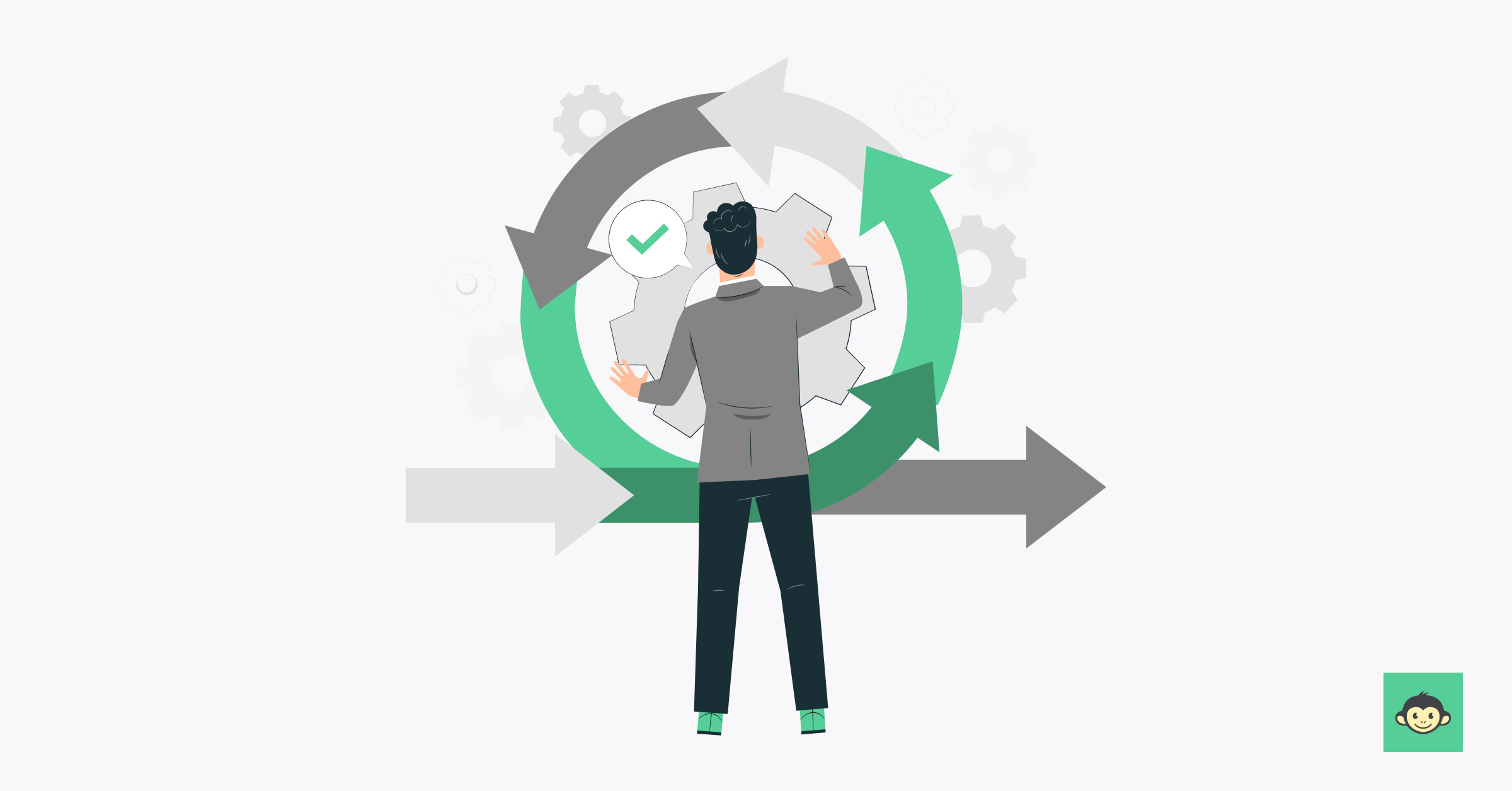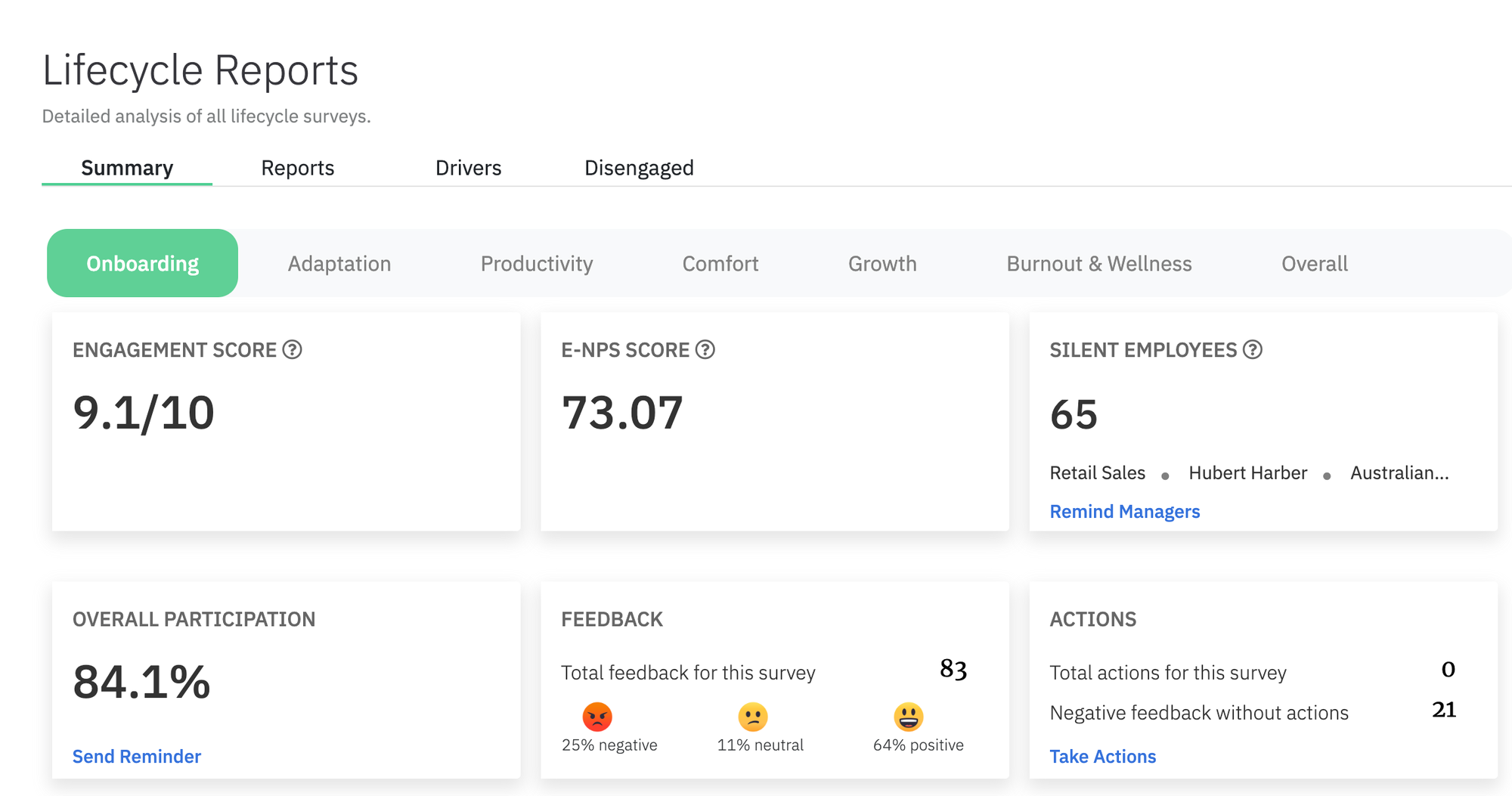Role of AI in implementing an employee life cycle model

Now, hold on tight because today, we're diving headfirst into the mind-bending topic of AI and its role in implementing an employee life cycle model.
Imagine a world where HR departments have a magical genie at their disposal, granting their every wish for seamless and efficient employee management. Well, AI is that genie equipped with algorithms and data-driven sorcery that can revolutionize how we nurture and support our workforce.
From attracting top talent with its irresistible charms to guiding employees on a path of growth and career development, AI is like the ultimate wingman for human resources. So, fasten your seatbelts, because we're about to explore the incredible ways AI can transform the employee life cycle.
Table of contents:-
- What is the importance of an employee life cycle model?
- Employee life cycle management with artificial intelligence
- What is the role of artificial intelligence in employee engagement and retention?
- Balancing technology and the human connection
- Conclusion
What is the importance of an employee life cycle model?
Now, you might wonder, "What's all the fuss about this employee life cycle model?" Well, buckle up, because I'm about to spill the beans on why it's crucial for any organization worth its salt.
Picture this: You hire a fantastic talent, someone who seems like a perfect fit for your team. But what happens next? How do you ensure they thrive, grow, and stay engaged? That's where the employee life cycle model steps in, waving its magic wand of structure and strategy.
By implementing this model, you create a roadmap that covers every stage of an employee's journey, from recruitment to onboarding, development, and even offboarding. It ensures consistent and effective processes, maximizing employee satisfaction, retention, and productivity. It's like having a well-oiled machine that keeps your workforce firing on all cylinders.
In short, the employee life cycle model is the secret sauce that transforms good organizations into extraordinary ones. It's the guiding light that ensures your employees feel supported, motivated, and ready to conquer the world.
Employee life cycle management with artificial intelligence

Let's start at the very beginning—the recruitment process. Gone are the days of sifting through mountains of resumes and relying on gut feelings to make hiring decisions.
AI systems can analyze resumes, comb through LinkedIn profiles, and even use text analytics to match candidates with job prerequisites. It's like having your own personal talent acquisition, making the hiring process faster, more efficient, and fairer.
Once the right candidates are onboard, AI continues working magic. It can personalize the employee experience, tailoring benefits and remuneration to suit individual needs. By analyzing employee data, organizations can gain insights into career trajectories, identify training needs, and boost engagement and productivity.
And when it comes to predicting attrition and absenteeism, AI is a game-changer. By analyzing massive volumes of employee data and behavior patterns, AI can identify those at risk of leaving and enable proactive measures to retain them.
Learning and development (L&D) also get a major boost from AI. No longer do we need to rely on one-size-fits-all training programs. Adaptive learning models powered by AI deliver personalized content to employees based on their individual needs and strengths. It's like having a personal tutor that knows exactly what you need to succeed.
But wait, there's more! AI breaks down silos within organizations, creating a seamless flow of data for effective analysis and decision-making. By implementing a data-driven and analytics-based approach to human capital management, businesses can optimize worker efficiency, responsiveness and ultimately enhance the overall employee experience.
What is the role of artificial intelligence in employee engagement and retention?
Ah, employee engagement and retention—the holy grail of every organization. And guess what? Artificial intelligence (AI) has a key role to play in this quest for happy, motivated, and loyal employees.
With AI-powered predictive analytics and tools, organizations can gain deep insights into employee behavior, preferences, and sentiment. They can identify patterns and trends that impact engagement and retention, enabling proactive interventions.
For example, AI can detect signs of disengagement or dissatisfaction, such as decreased productivity or increased absenteeism, and alert managers to take timely action.
AI also helps personalize the employee experience, catering to individual needs and preferences. It can recommend relevant learning and development opportunities, suggest career paths, and even curate content tailored to each employee's interests.
This level of personalization fosters a sense of belonging and growth, increasing engagement and reducing the likelihood of employees seeking opportunities elsewhere.
Moreover, AI can facilitate effective communication and collaboration. Chatbots and virtual assistants enable instant access to information, support, and feedback, creating a seamless employee experience. AI-powered platforms can also foster a sense of community by connecting employees with shared interests, promoting collaboration and knowledge sharing.
Balancing technology and the human connection
While we're diving headfirst into the wonders of AI and its impact on employee engagement and retention, it's important to remember that technology alone can't create the perfect workplace. In this age of digital transformation, it's crucial to strike the right balance between technology and human connection.
Yes, AI can streamline processes, boost productivity, and provide personalized experiences. But let's not forget the power of human interaction—the genuine connections, empathy, and understanding that only humans can provide.
After all, employees are not just data points; they are unique individuals with emotions, aspirations, and a need for human connection.
Technology can enhance our ability to communicate and collaborate, but it should never replace the power of face-to-face interactions, meaningful conversations, and genuine relationships. It's in these human moments that trust is built, creativity flourishes, and a strong sense of belonging takes root.
So, as we embrace the wonders of AI and leverage its potential, let's always remember the importance of maintaining a human touch. Foster an environment where technology serves as a tool to support human connection rather than overshadowing it.
By finding that delicate balance, we can create a workplace that combines the best of both worlds—efficiency, innovation, and the warmth of genuine human relationships.
In this digital age, let's remember that technology is a means to an end—a powerful enabler that should enhance, not replace, the core essence of human connection.
Conclusion
In conclusion, we've explored the incredible role of artificial intelligence (AI) in implementing an employee life cycle model. From recruitment to offboarding, AI has the power to revolutionize the way we attract, engage, and retain top talent.
By leveraging AI algorithms, personalized training, and data-driven insights, organizations can create an environment that nurtures employee growth, boosts engagement, and improves overall retention rates.
But to truly unlock the full potential of AI and create a thriving workplace culture, we need the right tools at our disposal. That's where CultureMonkey comes in. With its innovative employee engagement survey platform, CultureMonkey empowers organizations to measure and improve their culture through real-time feedback, pulse surveys, and actionable insights.
By combining the power of AI with human connection, CultureMonkey helps organizations build a culture that truly drives employee engagement and satisfaction.
So, if you're ready to embrace the AI revolution and take your employee lifecycle management to the next level, look no further than CultureMonkey. It's the perfect companion on your journey to creating a workplace where employees thrive, companies excel, and culture reigns supreme.
